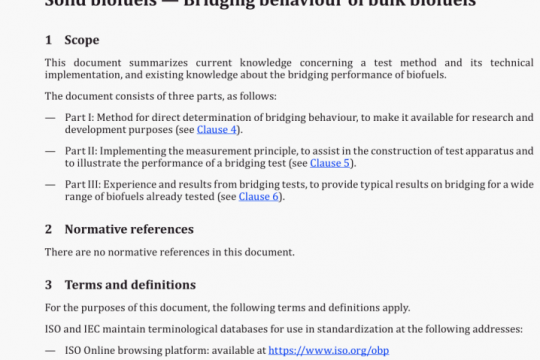ISO 12647-9 pdf free download
ISO 12647-9-2021 pdf free download.Graphic technology一Process control for the production of half-tone colour separations, proof and production prints – Part 9: Metal decoration printing processes using offset lithography.
4 Requirements
4.1 General
Digital data files delivered for printing should be accompanied by a digital proof print, a press proof print, or an OK print from a previous print run.
Press proof prints are test prints of the data files on a printing press which may serve as a reference for subsequent printing. While most proofs are digital proofs, for colour- or content-critical work there is a need for press proof prints with the same setup as the production print.
4.2 Data files and printing forms
4.2.1 Data delivery
Data delivered for printing shall be in the colour formats CMYI( or three-component and should be exchanged using PDF/X data formats.
The intended printing condition shall be indicated. In case of PDF/X, the mechanisms provided by the specified data format shall be used.
In case of other data formats, a printing condition description, a characterization data set in accordance with ISO 12642-1 and ISO 12642-2, or an International Colour Consortium (ICC) output profile in accordance with ISO 15076-1, shall be communicated.
If the data are other than CMYK, the data shall be defined by colorimetric descriptions using an ICC profile or another mechanism and an ICC CMYK output profile shall be included. The rendering intent to be used for each data element shall be communicated.
If the characterization data or ICC output profile provided conflicts with the printing conditions defined in this document, one of the methods defined in ISO/TS 10128 shall be used for data adjustment prior to print production. The aims for process control should be taken from characterization data, if agreed between all parties. Where this is done, densitometric tone values are not usually available and
© ISO 2021 – All rights reserved
ISO 12647-9:2021(E)
colorimetric tone values should be used. Further information on the relationship between colorimetric and densitometric tone values can be found in ISO/TS 10128.
NOTE A printing condition Is defined here as a print substrate description, a colorant description, a screening description, an ink set and a printing sequence.
Quality control of the content of a print job prior to final production checks are recommended since PDF/X conformance does not necessarily ensure a suitable image resolution or other production dependent criteria.
Additional spot colours are allowed, however, this document does not make provisions for tolerances.
4.2.2 Printing forme quality
The resolution of the plate setter should be selected to ensure that at least 150 tone value steps are reproduced.
For a screen employing single half-tone cell modulation, for example, if the intended nominal screen ruling is 80cm-1, the resolution of the plate setter should not be less than 1 000 cm. Fora screen with super-cell technology, it is possible to set the resolution to a smaller value.
4.2.3 Screen frequency (periodic screens)
For four-colour work, the screen frequency (screen ruling) for periodic screens should be within the range from 48 cm-1 to 80 cm1 69 cm1 (175 lines per inch) is the most common plate frequency.
NOTE I The screen frequency is often varied slightly from one process colour to another in order to minimize moire patterns. For example, there can be a difference of up to 6% of the nominal screen frequency between the colours C, M, Y.
NOTE 2 For the black or yellow colour halftone, a screen frequency is sometimes used which is substantially finer than the nominal screen ruling of the remaining colours, for example, 84cm-1 versus 60cm1.
Screen frequencies are often required or given in Ipi (lines per inch). To convert between screens per cm and lines per inch a conversion factor of 2,54 should be used.
The requirement 42.3 given in Ipi reads as follows (rounded to commonly used integral numbers): for four-colour work, the screen frequency (screen ruling) for periodic screens should be within the range from 120 Ipi to 200 Ipi.
4.2.4 Dot size (non-periodic screens)
For four-colour work, the screen dot size for non-periodic screens shall be within the range 20 pm to 40 pm and should be within the range 20 pm to 30 pm.
NOTE Outside of the range 20 pm to 40 pm, the general principles specified in ISO 12647-1 remain valid but specific values can differ.
4.2.5 Screen angle (periodic screens)
For half-tone dots without a principal axis, the nominal difference between the screen angles for cyan, magenta and black should be 300, with the screen angle of yellow separated at 15° from another colour. The screen angle of the dominant colour should he 45°.
For half-tone dots with a principal axis, the nominal difference between screen angles for cyan, magenta and black should be 600, with the screen angle of yellow separated by 15° from another colour. The screen angle of the dominant colour should be 450 or 135°.ISO 12647-9 pdf download.




